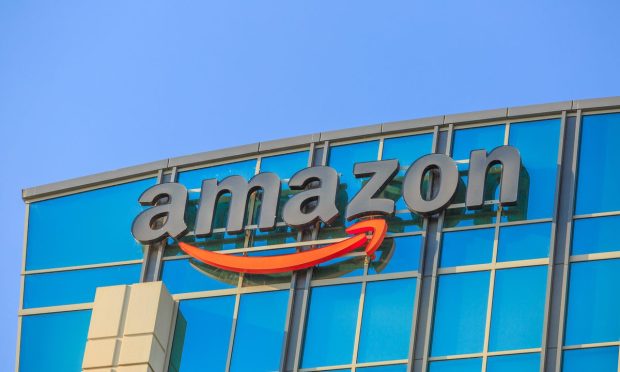AMZN vs WMT Weekly: Inside a 30%, 30-Day Drop and the Glory Days for Stores

Bad week. Bad month. Bad quarter. Bad year.
So goes the riff for slumping shares of Amazon, which are currently experiencing something they haven’t done in many years. Not only are they underperforming the broader market indexes — as well as rival Walmart — in each of those time frames, but they are now shackled with the awkward descriptive of having lost 30% in 30 days.
Think about that for a second. In the case of the mega-cap eCommerce giant like Amazon, reducing its market value by one-third amounts to a $500 billion haircut.
Said another way, Amazon’s one-month decline is worth the entire value of Walmart (plus another $80 billion to spare!), which works out to a mind-boggling $17 billion worth of daily valuation evaporation over the past month.
In the wake of a public punishment like that, one might think that something was seriously broken at the country’s biggest retailer, or that Amazon consumers or its cloud computing customers had suddenly undergone a drastic change of heart and were reverting to the ways of yore.
While everyone knows that a complete reversal of the digital shift is not — and will not — be happening, there’s no denying that a broad-based slowdown of peak eCommerce growth rates is underway, that is also being made worse by a jittery market, a shaky economy and a stretched and cautious consumer who’s looking to save money.
At the very least, the fact that Amazon is not alone in the ongoing beatdown of eCommerce marketplaces and platforms is reassuring in that this is a wholesale sell-off rather than an epitaph that the past two years of unprecedented digital progress were for naught.
After more than doubling during the COVID-era, what remains to be seen, however, is how much of the digital shift will be retained once things stabilize and normalize and how much will be lost to consumers who prefer to do their shopping and errands the old-fashioned way. Players such as Etsy, for example, have reported a 90% retention rate of the pandemic pop it experienced.
This is not to say all is well at the Seattle / Virginia-based tech giant, any more than it is a warning of impending doom.
It is simply an attempt to quantify the damage and highlight the fear that currently exists in the market, the economy and in consumers’ homes and budgets, while serving as a reminder that “bad stocks” are often tied to “great businesses.”
Walmart’s Moment
Two months ago, Amazon was riding high in the wake of new PYMNTS data that showed the online retailers had, after a 10-year slog, finally pulled ahead of Walmart with a 9.4% share of U.S. retail sales and a nearly 57% share of domestic eCommerce sales.
That victory, however, would prove to be short-lived as the war in Ukraine and subsequent spike in energy prices and inflation would quickly turn the tables on Amazon, while casting the retail industry — and the nation — into belt-tightening mode, which is right up Walmart’s alley.
As much as this post-COVID, inflation-crimped, rate-hiking phase has been brutal on Amazon and its eCommerce brethren, the same cannot be said for Walmart, whose shares have risen 2% over the past month while Amazon’s stock has fallen 30%.
Whether the near-term outperformance on Wall Street is a sound predictor of actual business results remains to be seen but it’s a mystery that will soon be resolved as Walmart is set to report its Q1 earnings results on May 17.
Ahead of that and in addition to stock market calculus, the latest Mastercard SpendingPulse report also revealed a major bias for in-store versus online shopping, with the former up 10% and the latter dropping nearly 2% last month.
Back in the Trenches
Meanwhile, both retailers were active this past week, unveiling new initiatives and partnerships aimed at growing sales and market share in hot categories, including pet care and athletic apparel.
For its part, Amazon kicked off National Pet Month with a systemwide swirl of product promotions, special digital pet personalization shopping tools, donation links to animal-related charities, and even discounts on pet-themed movies on Amazon Prime.
While Amazon and Walmart have both been long, large and active players in this lucrative niche, it is hard to ignore the fact that the uptick in activity comes at a time when pet care eCommerce leader Chewy is struggling, and rivals are looking to take a bite out of its business.
For Walmart, the weekly highlight was the launch of Love & Sports, an activewear and swimsuit design collaboration that the retailer said marked its latest effort to elevate its fashion game.
“We remain laser focused on expanding Walmart’s assortment of quality, on-trend apparel and accessories at an incredible value,” Denise Incandela, EVP of Apparel and Private Brands, Walmart U.S said in a blog post, that noted the company’s growing portfolio of strategic deals with designers and influencers.
In this case, Michelle Smith, better known for $675 silk camisoles, has teamed up with life-partner and fitness instructor Stacey Griffith, to create an initial 121-piece line of affordable, sporty apparel ranging from $12 to $42 that will roll out in 1,500 stores and the website.
